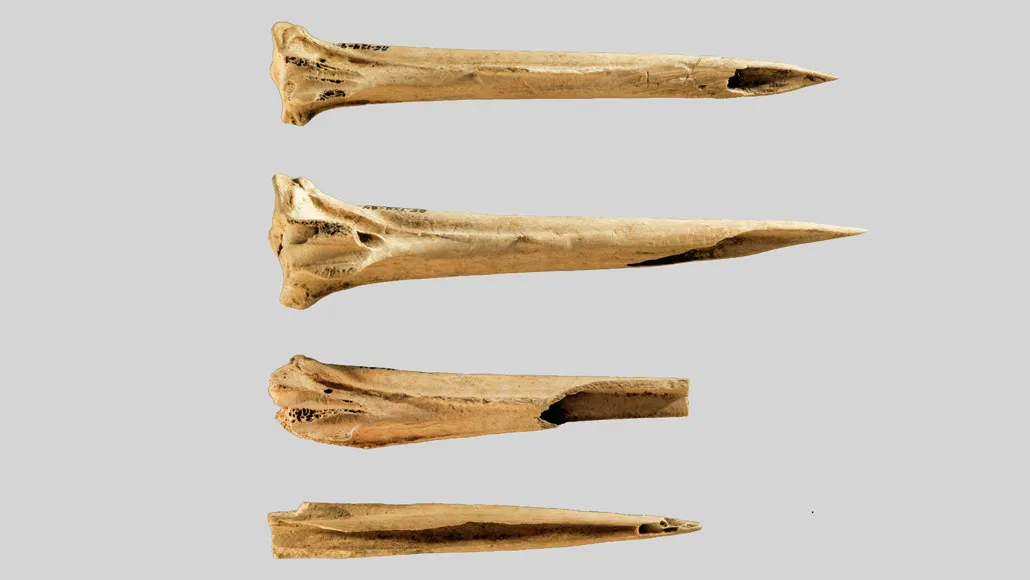The oldest known tattoo tools were found at an ancient Tennessee site
Sharpened turkey leg bones may have served as tattoo needles at least 3,620 years ago

Two previously unearthed turkey leg bones with sharpened tips (top) are the oldest known tattooing tools. Two other turkey bones from the same site (bottom) may also have been used for tattooing but lack tips for analysis.
A. Deter-Wolf, T.M. Peres and S. Karacic/Journal of Archaeological Science: Reports 2021







